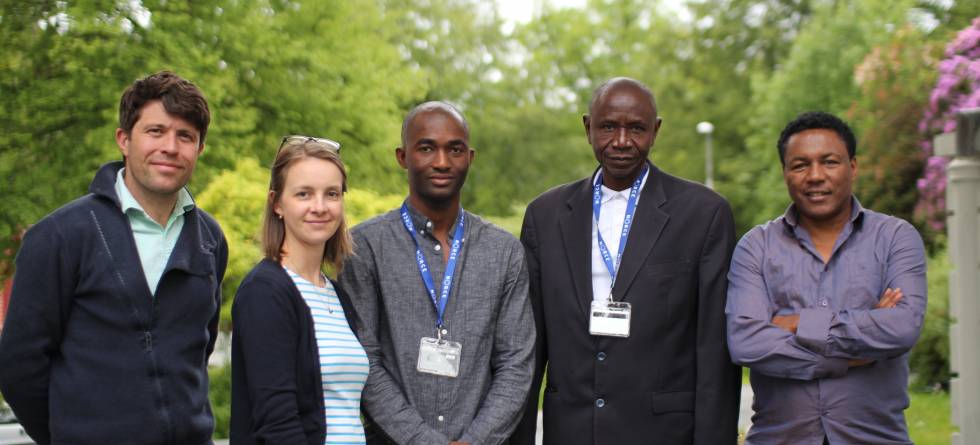This week weather forecaster Amadou Diakite and Sekou N´Faly Sissoko, Director for the Agence Mali-Meteo, the meteorological agency in Mali have been visting Bergen.
Climate researchers at Norce and the Bjerknes Centre, Teferi Demissie, Erik Kolstad, Scott Bremer and Amandine Tisserand, have been hosting the Mali guests as a part of a new weather forecast project specifically developed for agricultural use in Mali.
Rainfall out of season
In Mali the agricultural season is one and the same as the rainy season, stretching from June to September. 80 percent of Mali´s farmers depend on rainfall for their seeds to grow. But the latests years the farmers in Mali are increasingly meeting new challenges, with unexpected weather events out of season.
In May 2018 heavy rainfall caused flooding and severe damage, claiming 16 lives.
– Rainfall in May is not occuring as expected. Weather prediction has become difficult with many episodes of rain and flooding out of season. We need more knowledge of how climate change affects seasonal shifts, says Teferi Demissie, climate modeller at NORCE and the Bjerknes Centre.
He is hosting Dr. Diakite and Dr. Sissoko this week, as they work together to compare how the data uses and the yr.no forecast technology works out for Mali.
Two main seasons
Mali is landlocked, but is effected by the marine climate on the west coast of Africa, with mainly two weather seasons: The cold season and the rainy season. The north of Mali goes into the Sahel area where temperatures can vary between extremely warm and extremely cold.
While the rainy season is warm and humid, the cold season begins at the end of October/ beginning of November and lasts until March/ April. The meaning of cold is not like we know it here in Norway, though it starts out with temperatures down to 7°C and gradually it builds up to 32-36°C before the rain kicks in again.
– The cold season is not so much about temperature, it is more about when there is no rain. This season sees a lot of wind, storms and duststorms, says Amadou Diakite, weather forecaster at the Agence Mali-Meteo.
For agricultural use, the focus is on the 10-days weather forecast. Every 10 days decision makers gathers to discuss how the weather for the coming 10 days affects the country.
– It is quite impressive, and really something that could offer up lessons for ither contexts, Scott Bremer says. He is a researcher at UiB and Norce and looks into the social importance of the weather forecasts, and how trust plays a role in their use.

